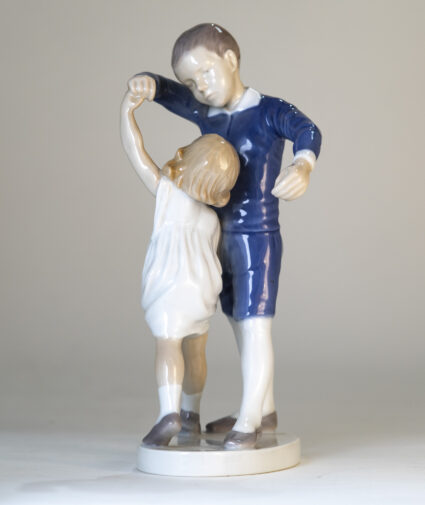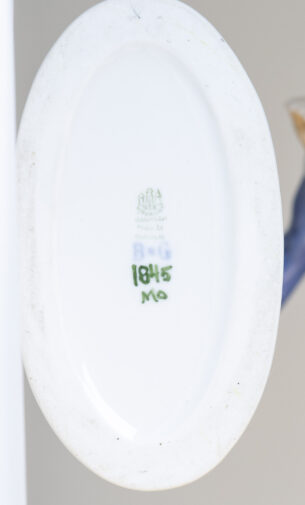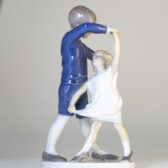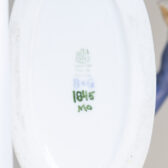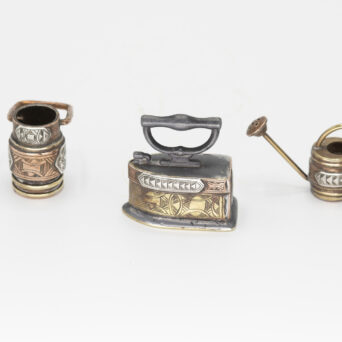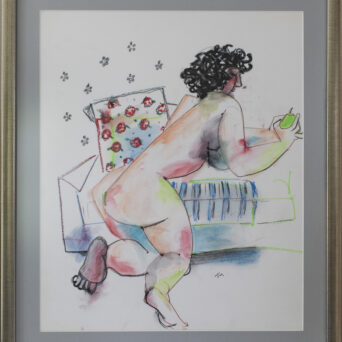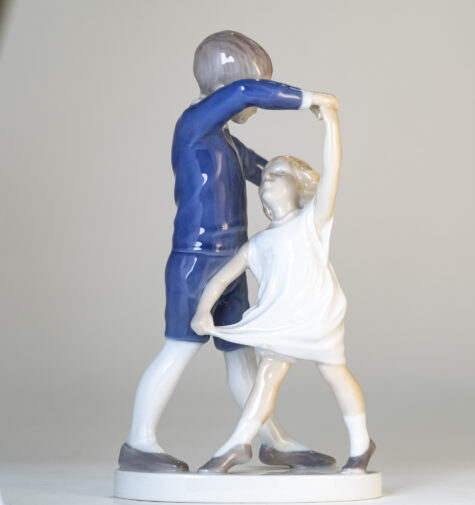
Bing & Grondahl Porcelain Figurine
Bing & Grondahl was a famous and popular Danish porcelain manufacturer. The company was founded in 1853 by a sculptor named Frederick Vilhelm Grondahl and merchant brothers Meyer Hermann Bing and Jacob Herman Bing. The brothers made their fortune as art and book dealers and Grondahl was a figurine maker for the Royal Danish Factory. Initially, the company started making and producing biscuit porcelain figures. Biscuit porcelain is unglazed white porcelain which does not need a glaze. Eventually the company branched out and became known for elegant tableware and coffee sets. At this time, they started glazing everything that they produced. The trademark backstamp for Bing & Grondahl porcelains is the three towers derived from the Coat of Arms in Copenhagen. Their signature design “Seagull” was created in 1892. This classic design features flying seagulls against blue backgrounds, sea horse handles and shaded patterns of scales around the edges. Due to its immense popularity from the 1950’s to the 1980’s this design was considered the “National Service of Denmark”. In 1987 the company merged with its primary competitor, the Royal Porcelain Factory and became Royal Copenhagen.
This is an enchanting mid 20th century Bing & Grondahl porcelain figurine. The children are dancing and are in a very sweet pose. Situated on a white oval base, the children are looking at each other. The company uses certain hues of blue, white, gray and beige and they are known for only using these shades in their work. The children are dressed and depicted in these colors. Bing & Grondahl are known for many poses of children and this is a lovely example of their work and the figurine is in excellent condition.
